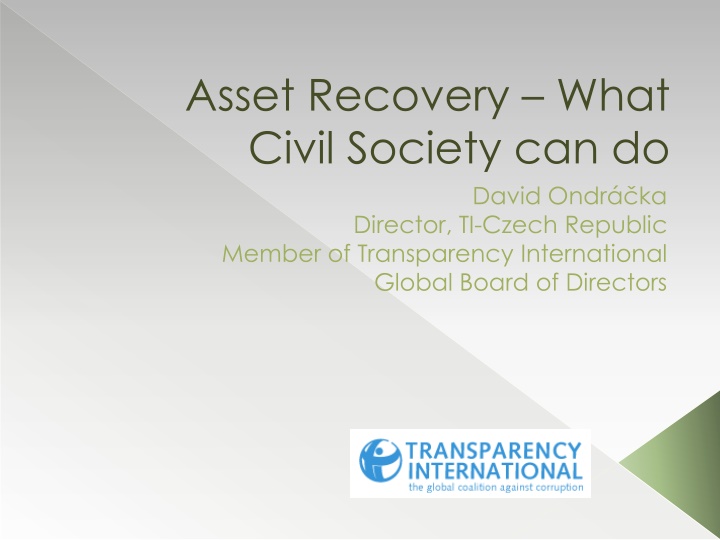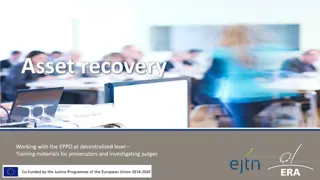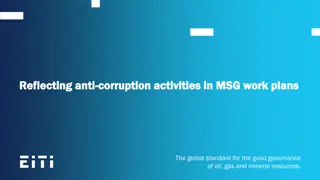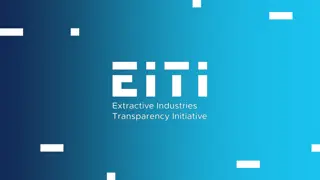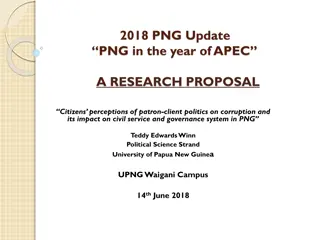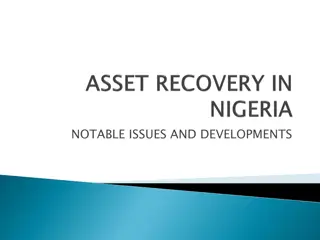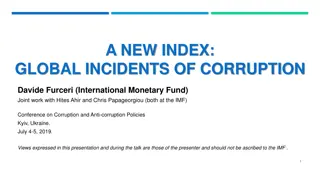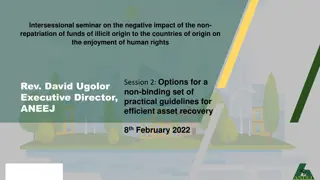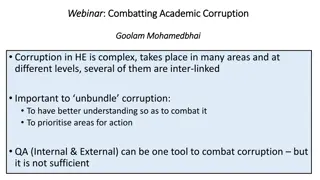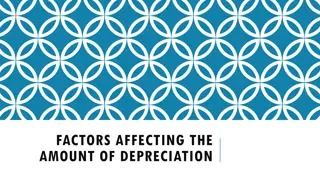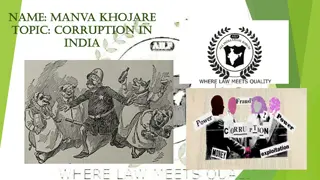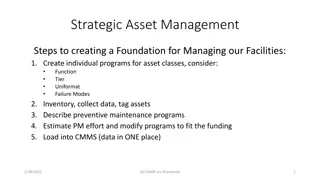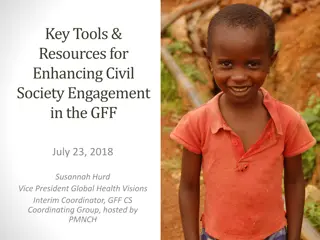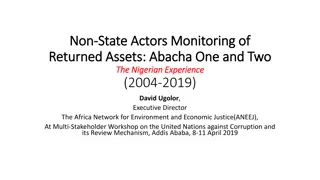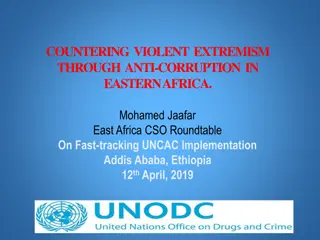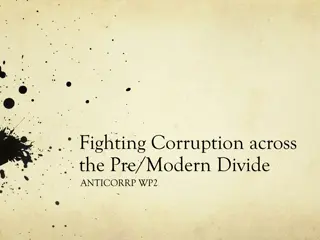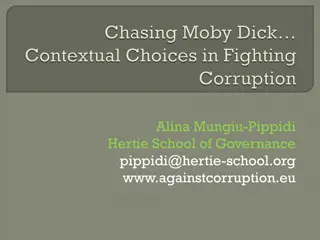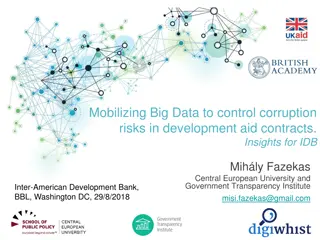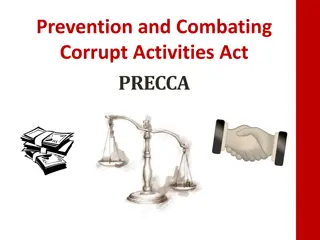Asset Recovery and Civil Society Involvement for Combating Corruption
Asset recovery in civil society involves tracing, freezing, and returning stolen public funds while compensating victims of corruption. Collaboration, information exchange, awareness, and advocacy play crucial roles in demanding government action and investigating corrupt practices like the Azerbaijani Laundromat scandal.
Download Presentation

Please find below an Image/Link to download the presentation.
The content on the website is provided AS IS for your information and personal use only. It may not be sold, licensed, or shared on other websites without obtaining consent from the author.If you encounter any issues during the download, it is possible that the publisher has removed the file from their server.
You are allowed to download the files provided on this website for personal or commercial use, subject to the condition that they are used lawfully. All files are the property of their respective owners.
The content on the website is provided AS IS for your information and personal use only. It may not be sold, licensed, or shared on other websites without obtaining consent from the author.
E N D
Presentation Transcript
Asset Recovery What Civil Society can do David Ondr ka Director, TI-Czech Republic Member of Transparency International Global Board of Directors Sem um st te sv logo.
Asset recovery civil society The ultimate aim is to trace, freeze, seize and return stolen public funds to the country of origin. Compensate victims of corruption Concept of asset recovery, to strengthen and support capacities of transition countries to recover stolen public assets, confiscate illicit funds We discuss particular focus on civil society involvement, transparency of information, rapid assistance from another country and collaboration between anti-corruption and asset recovery agencies. Sem um st te sv logo.
Asset recovery civil society Collaboration Exchange of information Awarenes Raising Name and Shame Communication Demand Government Action Investigation Most countries: sporadic and lax prosecution and punishment of officials responsible for grand corruption (did launder illegal money, what crime?) judges, prosecutors, lawyers and activists doing their part of work: seeking channels, ways and options to repair the damage caused by corruption and ensure compensation and redress for the public (corruption s real victim). Sem um st te sv logo.
Rich, Enablers, Banks, Regulators Sem um st te sv logo.
Azerbaijani laundromat a complex money-laundering scheme revealed by the OCCRP) in September, 2017. The investigations exposed that during two years between 2012 and 2014 about USD 2.9 billion was siphoned through European companies and banks. The money was used to pay off European politicians in an attempt to whitewash Azerbaijan s reputation abroad. Source of money isn t always clear, but it comes from companies linked to Azerbaijan s president, Ilham Aliyev, state ministries and the International Bank of Azerbaijan, the country s largest bank, which recently filed for bankruptcy protection. The cash was transferred into four offshore-managed UK companies. From there, it was spent in various countries, including Germany, the UK, France, Turkey, Iran and Kazakhstan. Sem um st te sv logo.
Azerbaijani laundromat Where does the data come from? An anonymous source leaked the data to the Danish newspaper Berlingske in Copenhagen. The paper shared it with the Organized Crime and Corruption Reporting Project (OCCRP), the Guardian, and other media partners. There are details of more than 16,000 transactions, including names of beneficiaries, bank payment details, and amounts in various currencies. Who benefited? Several prominent European politicians. Sem um st te sv logo.
Azerbaijani laundromat Sem um st te sv logo.
Troika Laundromat purpose of the system we ve named the Troika Laundromat was to channel billions of dollars out of Russia. But it was much more than a money laundering system: The Laundromat allowed Russian oligarchs and politicians to secretly acquire shares in state-owned companies, to buy real estate both in Russia and abroad, to purchase luxury yachts, to hire music superstars for private parties, to pay medical bills, and much more. sv logo. Sem um st te
Troika Laundromat (OCCRP) Sem um st te sv logo.
Thank you David Ondr ka david.ondracka@transparency.cz Sem um st te sv logo.
